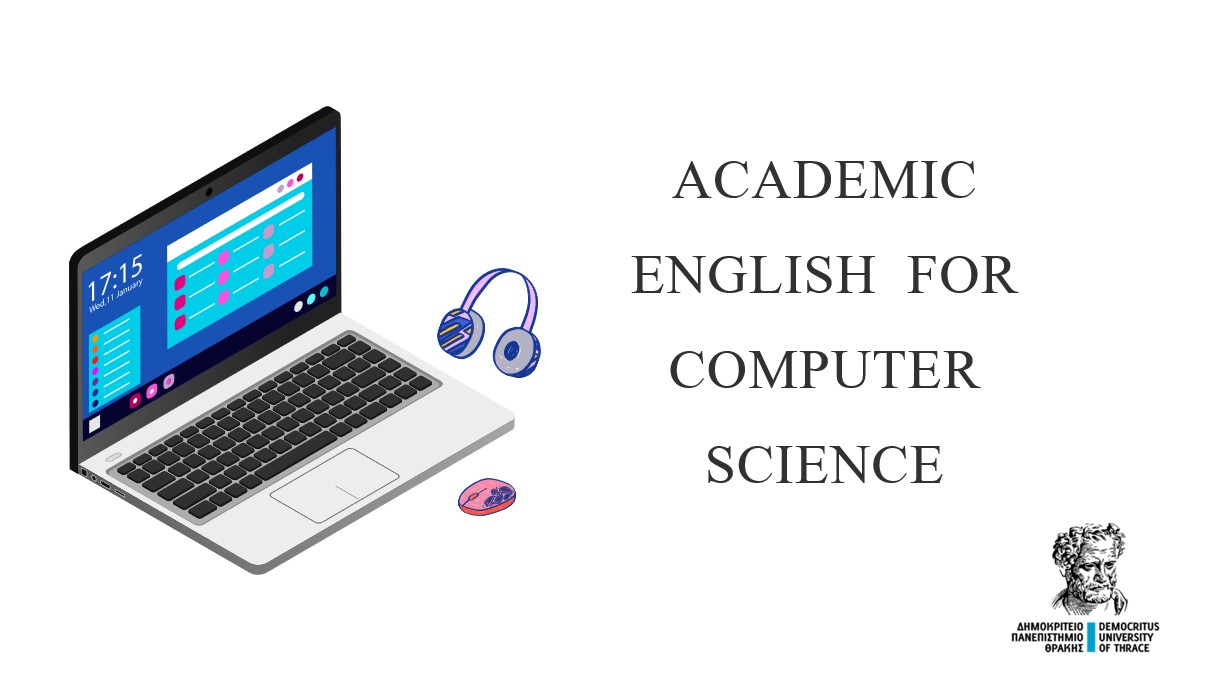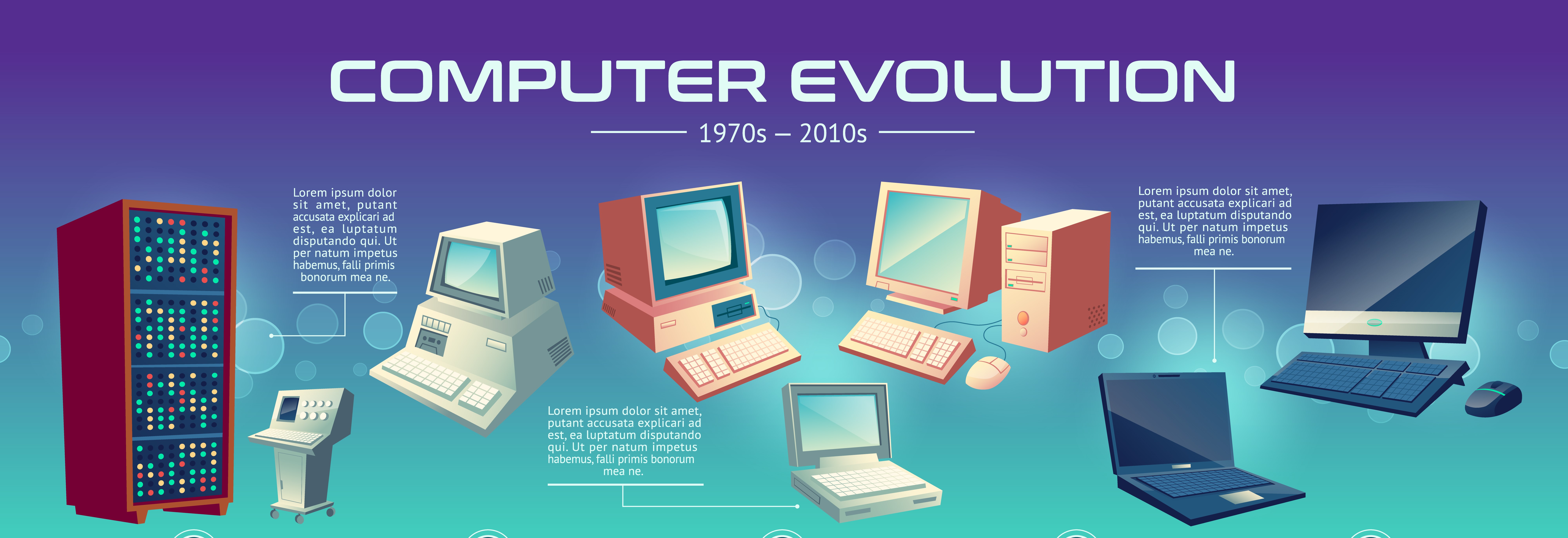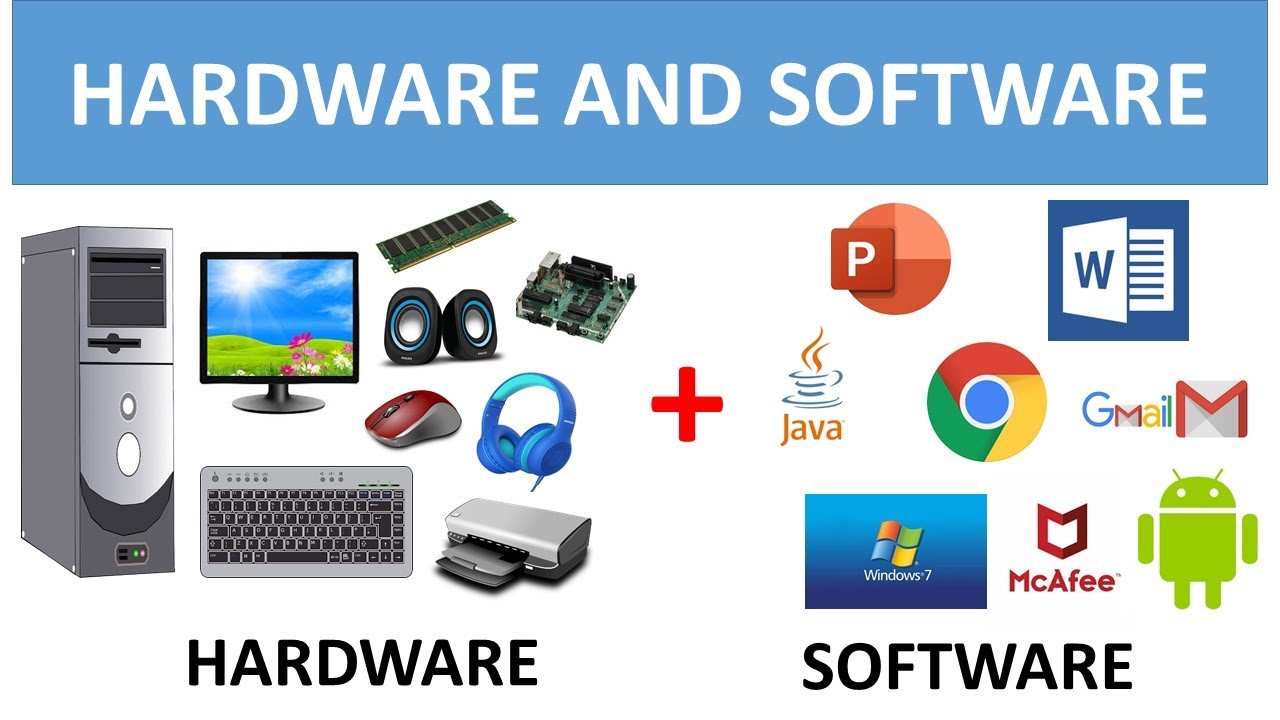Αγγλική Τεχνική Ορολογία
Topic outline
-
Welcome to the English for Computer Science course!

Instructor: Chrysoula Lazou
Course description
This course is an introduction to the specialized English language used in the discipline of Computer Science with an intent to help learners develop a wide range of transferable academic and study skills that are essential for Higher Education and their prospective professional settings. It is intended for upper intermediate and advanced level students who have a reasonable command of the main grammatical structures and vocabulary of everyday use.
Objectives
By the end of the course the students are expected to
- Understand academic papers relevant to their discipline
- Categorize specialized vocabulary and expressions
- Research, analyze and critically evaluate international resources
- Synthesize information and create new academic content (papers, posters, infographics, presentations)
- Present findings of their research, discuss, and elaborate on the results
- Develop collaborative and critical thinking skills
- Evaluate their own and other peers' work.
Course requirements
Assignment 1 - 30%
PROJECT: Infographic (groups of three)
Fill in the necessary information about your group members HERE.
-
Please write any questions about our course here.
Thank you.
-
Find attached the detailed instructions of your collaborative assignment. A Cheat Sheet of APA 7 is also attached to introduce you to academic writing style requirements.
-
Designed by vectorpocket / Freepik
This Unit focuses on the historical aspects of computing and computers. It is an introduction to the evolution of the computer while enhancing specialized vocabulary and academic skills such as
- creating timelines
- notetaking
- paraphrasing and
- presenting
Successful completion of the Unit involves the following steps:
STEP 1
Read thoroughly the three parts of "The story of the computer" of Unit 12 - Once Upon a Time which is attached to this section. To have access to the file you need to enter the password Recharging12.
STEP 2
Create a timeline of the "Story of the Computers". You may get ideas about useful webtools to use from the presentation file attached. Enjoy the experience!
Step 3
Use this unit forum to write a short summary based on one of the three texts.
-
This is a presentation of tools, their links, and description of their features to help you throughout your course.
-
-

This Unit will be devoted to hardware versus software terminology in English. More specifically, the module will deal with:
- Hardware vs Software
- Basic components & functions of a computer
- Output and input devices
- Cache memory
- Registers
- Ports and buses
- CPU
- Clocks
- Shapes & figures
- Booting up
- Disposal of used computer parts
Step 1
Watch the video that explains what cache memory is and respond to the questions:
- The video distinguishes between two types of memory: the first is DRAM, or dynamic RAM. What is the second?
- What is the difference between the two?
- Which of the two types of memory is used in the CPU cache?
- Mention one advantage and one disadvantage of DRAM.
- What does cache memory store?
- Which memory does the CPU access first?
- Does the video explain von Neumann bottleneck?
- How many levels does CPU cache come in? Which level is the fastest?
- Which level of cache is referred to as shared cache?
Step 2
Study the glossary. Then take the quiz.-
This is the pdf file of the Unit "Hard as Rock". You need to enter the password to have access to it.
-
Study the glossary and try to respond to the quiz.
-

This Unit focuses on telecommunications, their history, and the components of telecommunication systems. Wireless technologies and safety issues will be explored while enhancing vocabulary and lexical patterns.
Upon completion of the unit the learners will be able to:
- understand and apply vocabulary related to the telecommunications
- define concepts related to the topic
- practice moun modifiers and lexical patterns
- use collocations in productive linguistic context
- comprehend and summarize the main points of long texts
- produce argumentative essays
- discuss, analyze, and reflect on safety of wireless technologies and their impact on our lives
-
Use the password provided by the instructor to have access to the text. This is text 16.
-
Read the text
"The first mobile phone call was 75 years ago - what it takes for technologies to go from breakthrough to big time"
Work in teams and write a short summary (about 10 words) of the main point(s) in each section.
Work with your team members and decide on the best way to convey the meaning of each of the following sections:
Section A (Introduction):
Section B (Big History in small packages):
Section C (Military necessity):
Section D (Looking forward):
-

This unit aims to empower learners to develop academic writing skills and terminology related to research papers.
On completion of the unit, the students will be able to
- identify types of journals and articles
- list the sections and structure of articles
- analyze the steps of a scientific method
- evaluate the aims, importance, and process leading to a publication
- identify linguistic nuances in articles that express opinion instead of facts (hedging vs boosting)
- discuss strengths and weaknesses of research articles
- search for academic articles, review them, and present results
-
Google Scholar is a rich repository that hosts scholarly literature across a wide variety of disciplines and sources.
-
A repository to access 160+ million publication pages and connect with 25+ million researchers.
-
This Unit is about Nanotechnology.
There is an exploration of terminology related to it as well as texts related to defining its various forms.
-
Unit 20 focuses on the history and evolution of nanotechnology, the 'great minds' whose work, discoveries and contributions current developments are based on.
-
This link is a source elaborating on how nanotechnologies enable the management of food ingredients on a molecular level.
-
-

This unit focuses on the importance of following specific guidelines in order to access, analyze and review academic papers. In addition, there are some guidelines to organize your academic writing.
-
This is a presentation including important information about the necessary steps to conduct a critical review. The presentation is from Unit 10 of the book “Academic English for Computer Science" 2nd edition, by Noni Rizopoulou
-
This is a presentation about the structure of an academic paper, from the book “Academic English for Computer Science" (2nd edition) by Noni Rizopoulou
-
“Academic English for Computer Science" (2nd edition) by Noni Rizopoulou
-
-
-
Create your EUROPASS CV
The Europass CV builder makes it easy to create your CV online. You can use it to apply for a job, education or training opportunities as well as volunteering.
-
-
Αγαπητές και αγαπητοί συμμετέχοντες, έχετε λάβει δύο emails από την διεύθυνση noreply-universis.duth.gr.
Παρακαλώ αγνοήστε το πρώτο email (αν πήρατε) και χρησιμοποιήστε τους κωδικούς που λάβατε με το τελευταίο email ώστε να προβείτε στην αξιολόγηση των μαθημάτων, από 27/11/2024 εως και 13/12/2024.